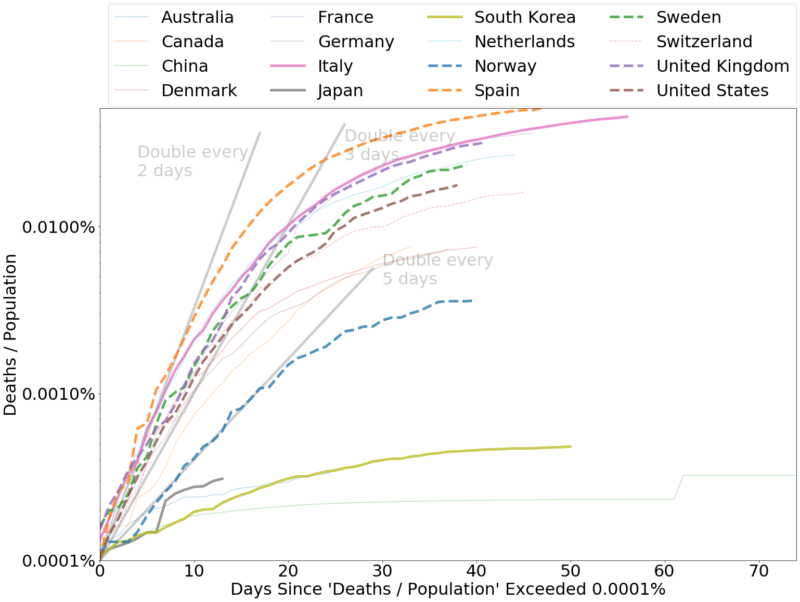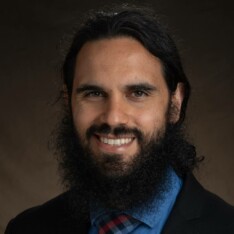Beware a Second-Wave Attack on Liberty

The recent weeks have revealed a failure to engage in constructive dialogue, especially in regard to the meaning of data. Governors locked down entire states. Media has largely been accepting of the premises supporting the lockdown. Institutional actors who consider themselves guardians of the existing order have largely supported this policy and denounced those who would like to have a discussion about the facts.
Consider that the recent video from Drs. Erickson and Massihi in Bakersfield, CA was quickly denounced by the American College of Emergency Physicians and the American College of Emergency Medicine without any consideration of the arguments presented in the video. You don’t have to agree with everything these doctors present in order to support their right to question the effectiveness of the shutdown.
Meanwhile, the Imperial College Study, which grossly overestimated the worst case scenario, has received little in the way of question from the medical establishment. Researchers used the Imperial College model for a study that suggests that with no shut down in Sweden the country would face many tens of thousands of deaths from COVID-19. And even in the best case, this model predicted that by May 1st Sweden would experience 12,000 to 13,000 deaths.
Without lockdown, Sweden has experienced less than 3,000 deaths. On a per capita basis, Sweden is faring much better than the UK given the progress of the spread counted from the first day that .001% of the population had died from COVID-19. The studies were wrong. After being regarded with suspicion by many in the press, Sweden has now received praise from the World Health Organization for its approach. Only time will tell how the media integrates the statement from the WHO into a narrative that has until now opposed it. And still, I leave out the impressive results of containment in South Korea and Japan, both of which led the free world in terms of their successful slowing of the spread absent draconian measures and both of which have been largely ignored by the American media.
In observing the national media and public response, I notice an attitude among many that we need not only to “flatten the curve,” but eradicate it. We are to submit to directives without question. Internalize the lockdown ethos without concern for its actual effectiveness. For weeks much of the nation has been locked down, putting off the spread throughout most of the U.S. In the background we hear the continual humming of major media outlets telling us how terrible COVID-19 is. Reminding us that the virus has increased its spread from thousands to hundreds of thousands, and now millions across the U.S.
And despite this continual bombardment by media outlets, interpretation of the data is lacking. Deaths have surpassed Fauci’s lower estimate of 60,000, though no one seems certain what levels of spread would represent success or failure. Should we be concerned about a virus that is twice as deadly as the seasonal flu? Five times as deadly? Where is the limit? The upper limit for annual flu deaths presented by the CDC is 62,000. And about 3 million people die each year in the U.S., averaging around 8,000 per day. So would 100,000 deaths be bad, but not terrible? Or are we mostly concerned to avoid overloading capacities of medical systems in metro areas?
I don’t know, and national headlines show no interest in discussing these questions. Those who directly question the dominant narrative are immediately denounced, like the doctors in Bakersfield whose actions were purportedly motivated by “their personal financial interests without regard for the public’s health.” Their discussion, quietly removed from YouTube. Serious and reasoned critiques questioning the lockdown narrative, ignored. Those who predict that the apocalypse is coming are touted by media as providing reason to be fearful. Slogans like “Stay the f#$* home!” reinforce a hysteria bundled with an unwillingness to identify and communicate the facts surrounding the epidemic.

The disease must spread. Wise policy and adoption of social norms that promote care can prevent the spread from causing unnecessary deaths.
The elite who collectively run the social order (leading intellectuals, politicians, owners of media, journalists, etc…) coordinated around a plan of mass lockdown, come hell or high water. For weeks, the public has been cooperative as uncertainty was initially very high. This comes at a cost. The effect of 2 weeks of lockdown has been recorded in the change in real GDP in the first quarter.
Real GDP fell at an annualized rate of nearly 5% from only 2 weeks of lockdown. We have at least another 4 weeks to include for most states. And there is still much uncertainty about the course of exit from lockdown. The unemployment rate jumped to 4.4% by the end of March and is expected to be in the double digits next month. In the last four weeks, 30 million have signed up to receive unemployment insurance. These claims alone represent 18% of the civilian labor force!
Uncertainty surrounding reopening could make recovery drag on for many months. Spread has been largely contained in the United States. Only in a few areas does there exist a noticeable COVID-19 outbreak leading to a pronounced increase in COVID-19 related deaths: New York, New England, Louisiana, and Michigan. Medical systems have been overwhelmed in these regions. Intensive care units in New York have lacked supplies necessary to efficiently serve all patients in need. Weekly deaths over the last month are significantly elevated in regions struck by COVID-19.
Many other metropolitan areas are ripe for spread of COVID-19 and will likely experience similar tests with reopening. This is unavoidable.
We must allow the spread, a fact that epidemiologists guiding policy in Sweden are not shy to confront. Are we as prepared as Sweden to prevent this process from generating unnecessary tragedy? Can we do so responsibly, sheltering the vulnerable? Can we avoid overwhelming the medical system? Can a responsible spread occur without shutting down the economy?
This week and next, we will begin to see the answer to these questions. Many states in the U.S. intend to begin reopening with the caveat that lockdown might resume depending upon the change in the rate of spread.
The end of lockdown is something to celebrate, but we must take precaution if civil liberties are not to suffer more excoriation from the popular press. Those who are weary of this should be ready to carefully interpret the data and challenge narratives that misconstrue the facts surrounding COVID-19, the lockdown, and the return of daily liberty.
Spread will resume with the end of lockdown. The media outlets touting reasons to be fearful will remind us why they were right when the number of deaths increase. It’s quite likely that as other metropolitan areas experience spread – which is bound to occur – fear and regret lead to calls for economically damaging lockdowns that don’t effectively confront the problem of spread.
To move on, the spread must occur. If we employ smart policy, we will allow the virus to spread among the young and shelter our old. We must encourage those with preexisting conditions – hypertension, heart disease, and so forth – to isolate in order to avoid contracting the virus.
If we could relive the last month and a half, we would have been much wiser if we isolated the elderly who live in care homes and strongly encourage others vulnerable to shelter in place. We could have avoided situations where carehome populations were more than decimated by COVID-19. Instead, Congress passed a $2.2 trillion spending package paying people not to work. They would have done better to just pay the unemployed a lump sum and allow them to get on with their lives.
We can’t turn back time to reverse the ignorance from which we suffered. We can’t undo the massive expansion of the deficit and the poor incentive structure that the CARES Act created. On the bright side, the medical systems had an extra month to prepare for the virus. And we have developed a culture of concern about the spread.
This may be enough to moderate downside risk as we restore freedoms suspended overnight by governors and mayors across the country. And it is not too late to support the vulnerable who must continue sheltering. We must if we are to avoid a second-wave attack on liberty by a free press that shows little interest in defending it.











